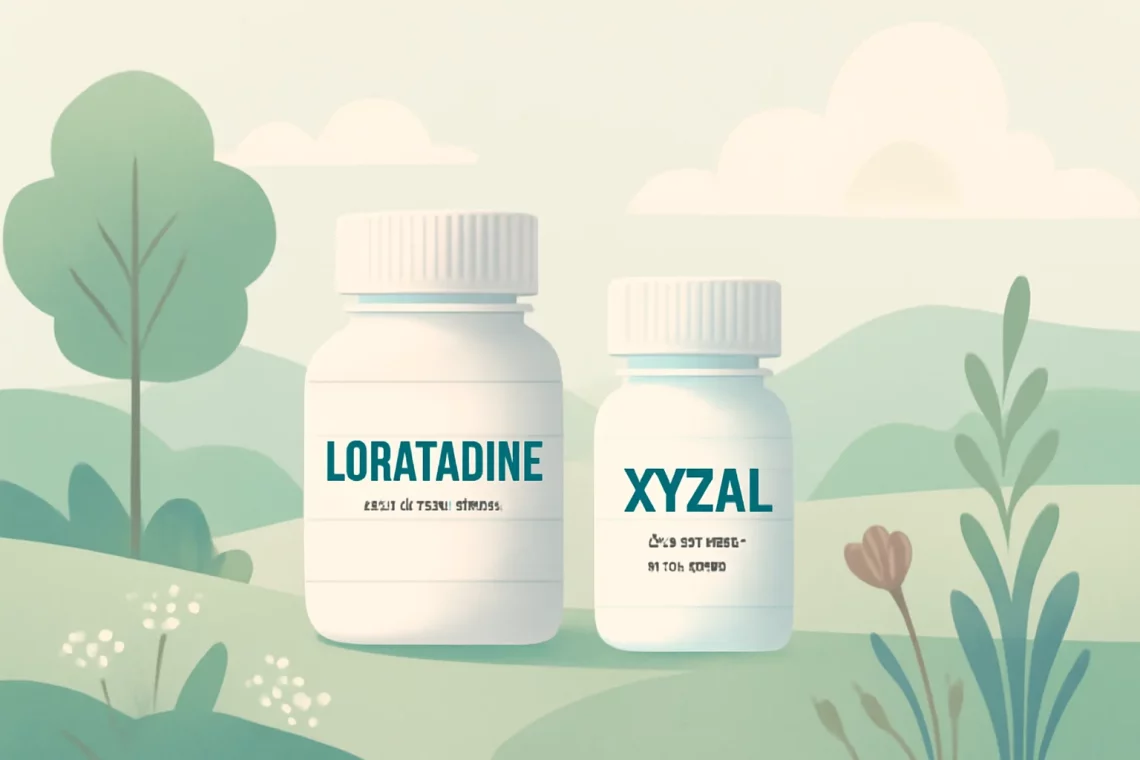
Loratadine vs Xyzal: Which Allergy Medication Is Right for You?
Allergies are a common concern for many individuals, often leading to discomfort and disruption in daily activities. The body’s immune response to allergens can trigger various symptoms, such as sneezing, itching, and nasal congestion. To combat these symptoms, a wide range of antihistamines are available on the market. Two popular options are Loratadine and Xyzal, both of which are used to alleviate allergy-related symptoms. Despite sharing a common purpose, these medications differ in their active ingredients, mechanisms of action, and potential side effects. Understanding these differences can empower individuals to make informed decisions about their allergy management.
In the realm of allergy relief, choosing the right medication can significantly impact the quality of life. Factors such as the severity of symptoms, individual health conditions, and personal preferences play a crucial role in this decision-making process. As we delve deeper into the world of Loratadine and Xyzal, we will explore their unique properties, effectiveness, and any considerations that users should keep in mind. This understanding will provide clarity for those seeking the best solution for their allergy symptoms.
Overview of Loratadine
Loratadine is a second-generation antihistamine widely used to treat allergic rhinitis and hives. It works by blocking the action of histamine, a substance in the body that causes allergic symptoms. Loratadine is particularly favored because it typically causes less drowsiness compared to first-generation antihistamines. This makes it a popular choice for individuals who need to maintain their daily activities without the sedation often associated with allergy medications.
The drug is available in various forms, including tablets, liquid, and dissolvable tablets, making it accessible for different age groups and preferences. Its onset of action is relatively quick, with many users experiencing relief within one to three hours after ingestion. Loratadine also boasts a long duration of action, allowing for once-daily dosing, which enhances compliance and convenience for users.
In terms of side effects, Loratadine is generally well-tolerated. Common side effects may include headache, fatigue, and dry mouth. However, severe allergic reactions are rare. It is essential for users to disclose their medical history to healthcare providers, as Loratadine may interact with certain medications or exacerbate specific health conditions.
Overall, Loratadine serves as an effective option for those seeking relief from allergy symptoms. Its non-sedating properties and ease of use make it a practical choice for many individuals, helping them to manage their allergies without compromising their daily routines.
Introduction to Xyzal
Xyzal, known generically as Levocetirizine, is another second-generation antihistamine used to treat allergy symptoms. It is particularly effective for conditions such as allergic rhinitis and chronic urticaria. Like Loratadine, Xyzal functions by blocking histamine receptors, thereby reducing the body’s allergic response. However, Levocetirizine is an enantiomer of Cetirizine, which means it is a specific form of the molecule that can enhance its efficacy and reduce side effects.
Xyzal is available in both tablet and liquid forms, making it suitable for various age groups, including children. One of the notable features of Xyzal is its fast action; many individuals report symptom relief within an hour of taking the medication. This quick onset can be particularly beneficial for those who experience sudden allergy flare-ups.
While Xyzal is generally well-tolerated, it is known to cause drowsiness in some individuals, albeit less so than first-generation antihistamines. Users should be cautious about engaging in activities that require full alertness, such as driving, after taking Xyzal. Common side effects include fatigue, dry mouth, and, in rare cases, gastrointestinal disturbances. As with any medication, it is crucial for individuals to consult with their healthcare provider to ensure that Xyzal is appropriate for their specific health situation and to discuss any potential interactions with other medications.
Xyzal’s effectiveness and rapid action make it a compelling option for allergy sufferers seeking immediate relief. However, the possibility of drowsiness should be considered, especially for those with demanding schedules or responsibilities that require undivided attention.
Comparative Effectiveness
When comparing the effectiveness of Loratadine and Xyzal, individual response can vary significantly. Both medications are effective antihistamines, but they may work differently for different people. Clinical studies have shown that Levocetirizine (Xyzal) may provide a more robust response in reducing nasal congestion and other allergy symptoms compared to Loratadine. This difference in effectiveness can be attributed to the pharmacological properties of the drugs and their interactions with histamine receptors in the body.
Loratadine is often recommended for individuals whose allergy symptoms are mild to moderate. Its non-sedating nature makes it ideal for those who need to avoid drowsiness or sedation. On the other hand, Xyzal may be more suitable for individuals experiencing moderate to severe symptoms or those who require faster relief. The choice between the two medications can depend on the severity of symptoms, the need for rapid relief, and individual tolerance to potential side effects.
Moreover, some individuals may find that they respond better to one medication over the other. This variability underscores the importance of a personalized approach to allergy management. It’s advisable for users to monitor their symptoms and discuss their experiences with healthcare providers to determine the most effective treatment plan.
In summary, both Loratadine and Xyzal offer valuable options for allergy relief. While Loratadine may be sufficient for many individuals, Xyzal could provide enhanced relief for those with more pronounced symptoms. Understanding one’s body and how it responds to these medications is key to effective allergy management.
Potential Side Effects and Considerations
Both Loratadine and Xyzal, while generally safe and effective, come with potential side effects that users should be aware of. Understanding these side effects can help individuals make informed decisions about their allergy treatment options.
As mentioned earlier, Loratadine is often well-tolerated, but users may experience side effects such as headaches, fatigue, and dry mouth. While serious adverse reactions are rare, it is imperative to be vigilant for any unusual symptoms following the use of the medication. Individuals with pre-existing health conditions, such as liver or kidney issues, should consult their healthcare provider before using Loratadine, as it may require dosage adjustments.
Xyzal, while effective, has a higher propensity for causing drowsiness compared to Loratadine. Users should exercise caution when taking this medication, particularly if they need to drive or operate machinery. Other common side effects of Xyzal include fatigue and dry mouth. In rare cases, individuals may experience more severe reactions, such as an allergic reaction or gastrointestinal upset.
Additionally, it is essential for both Loratadine and Xyzal users to be aware of potential interactions with other medications. For instance, alcohol can exacerbate drowsiness when taking Xyzal, and certain medications may alter the efficacy of Loratadine. A comprehensive discussion with a healthcare provider can clarify any concerns and ensure safe usage.
In conclusion, while Loratadine and Xyzal can provide significant relief from allergy symptoms, being aware of their potential side effects and interactions is vital. Individuals should closely monitor their health and consult with healthcare professionals to optimize their allergy management strategies.
This article is not intended as medical advice. Always consult with a healthcare professional for any health-related issues or before starting new medications.




